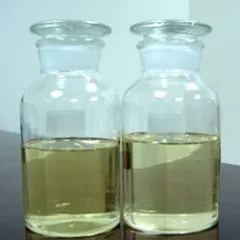The Secret Life of Lung Bubbles: Why Your Alveoli Love Soap
(What Is The Purpose Of Surfactant That Lines Each Alveolus?)
Imagine blowing up a balloon. The first breath is the hardest. You puff your cheeks, strain a little. Now imagine blowing up millions of tiny balloons with every breath. That’s your lungs. Those microscopic balloons are called alveoli. They’re the reason oxygen gets into your blood. But there’s a problem. Tiny things like alveoli hate staying open. They’d rather collapse. So how do your lungs keep them from squishing shut every time you exhale? The answer is soap. Not the kind you wash dishes with, but something just as slippery: surfactant.
Surfactant is a sticky, soap-like fluid coating the insides of your alveoli. Think of it as a magic gel that makes the walls of those air sacs less clingy. Without it, breathing would feel like trying to suck a thick milkshake through a straw. Your chest would heave. Your muscles would tire. You’d gasp. Surfactant stops this nightmare by doing two big jobs.
First, it cuts the surface tension inside alveoli. Surface tension is like an invisible force that makes water form droplets. In your lungs, water molecules lining the alveoli naturally stick together. This pull can collapse the tiny air sacs. Surfactant molecules wedge themselves between water molecules, pushing them apart. It’s like adding dish soap to greasy pans—the soap breaks up the grease, making everything slide easier. With surfactant, the alveoli stay open instead of sticking shut.
Second, surfactant makes all alveoli equally stretchy. Lungs aren’t perfect. Some alveoli are bigger, some smaller. Without something to balance them, bigger alveoli could steal air from smaller ones. Surfactant ensures that when you inhale, every alveolus gets a fair share of air. It’s like a teacher making sure every kid gets the same number of cookies. The result? Your lungs inflate smoothly, like a well-organized team.
Here’s where it gets cooler. Surfactant isn’t just a lubricant. It’s also a bodyguard. Dust, germs, and other junk sometimes sneak into your lungs. Surfactant traps these invaders, making it easier for immune cells to hunt them down. Picture a sticky flytrap catching bugs. Then your body’s cleanup crew—white blood cells—roll in to dispose of the trash.
Babies know surfactant better than anyone. Before birth, their lungs are full of fluid. In the womb, they don’t need to breathe. But the moment they’re born, those tiny alveoli have to snap open fast. Babies start making surfactant late in pregnancy. If they’re born too early, their bodies might not produce enough. This causes respiratory distress syndrome. Preemies often need surfactant treatments to help their lungs work. Doctors give it through a breathing tube, like greasing a squeaky hinge.
Adults aren’t off the hook. Smoking, pollution, or diseases like pneumonia can wreck surfactant. When that happens, alveoli struggle. Breathing becomes labored. Oxygen levels drop. Hospitals sometimes use artificial surfactant for patients with severe lung damage. It’s like hitting the reset button on a sticky computer—it gives the lungs a fresh start.
(What Is The Purpose Of Surfactant That Lines Each Alveolus?)
Surfactant doesn’t get applause. You won’t see it mentioned in fitness ads or vitamin labels. But every time you take a breath—easy, automatic—it’s there. It’s the unsung hero turning a potential lung disaster into a smooth, silent process. Next time you yawn or sigh, remember the soapy stuff keeping your alveoli bouncy. Without it, breathing would be a battle, not a reflex.
Inquiry us
if you want to want to know more, please feel free to contact us. (nanotrun@yahoo.com)




